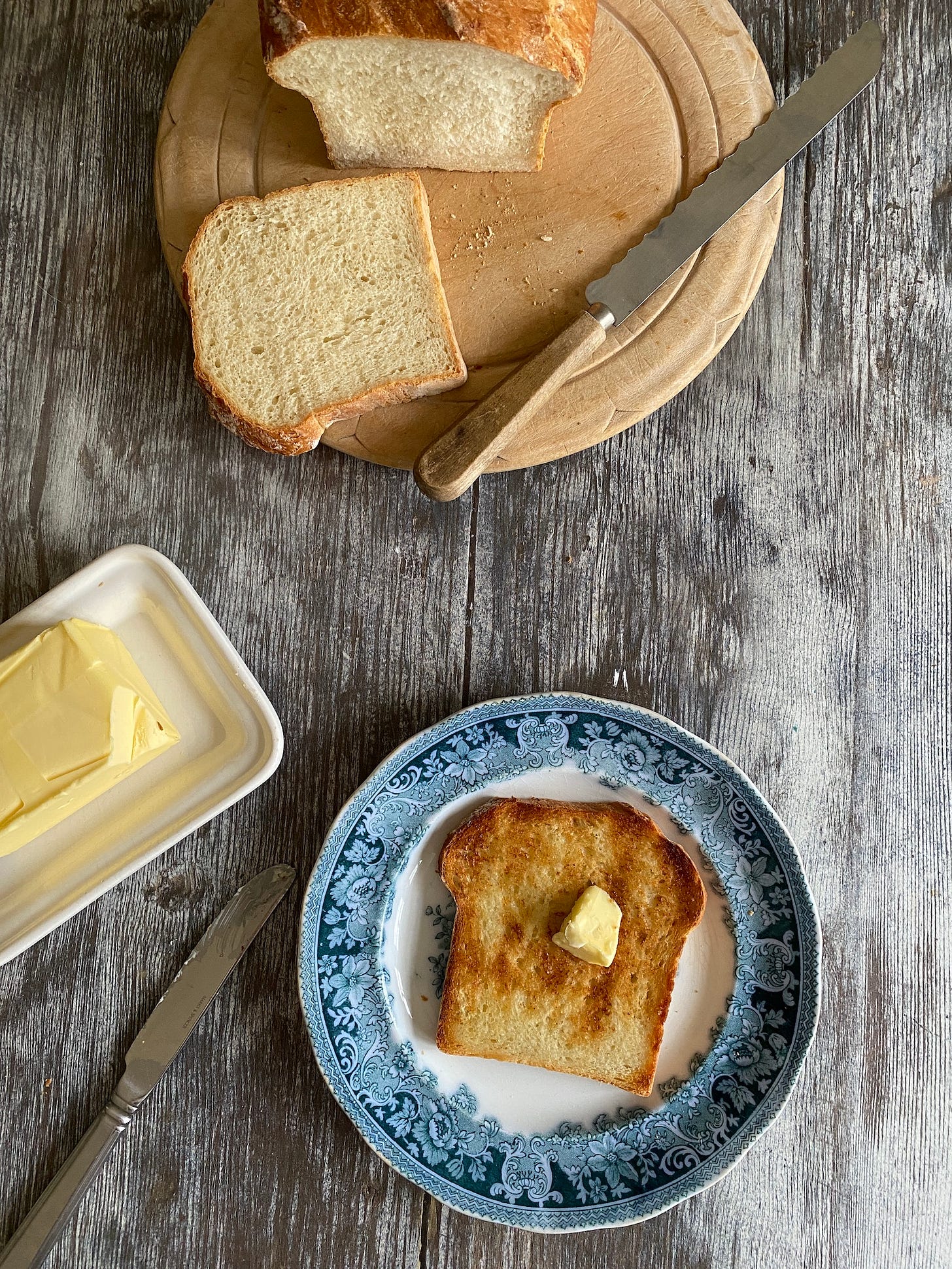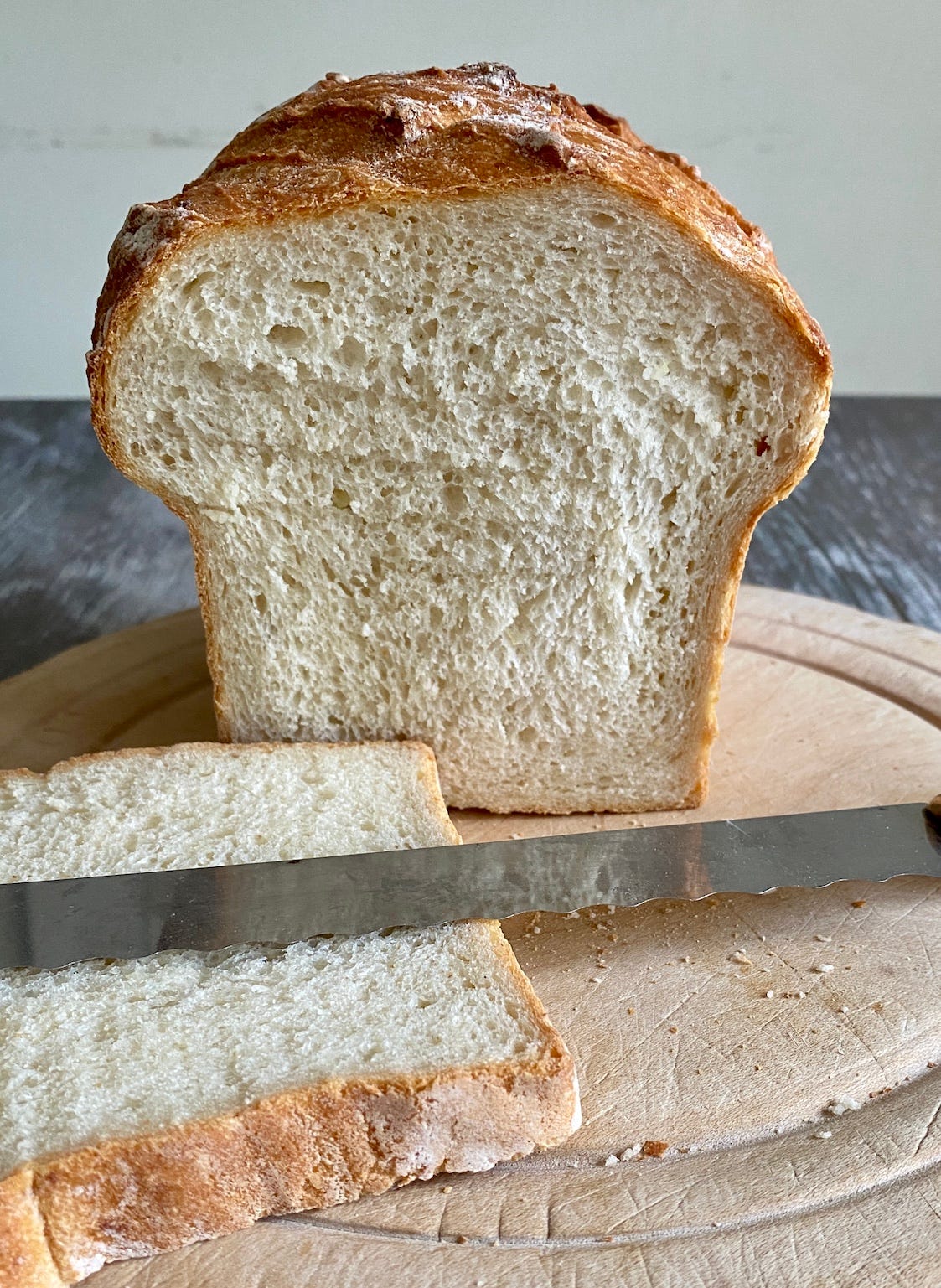In periods where grain harvests were poor, potatoes were seen an ideal alternative to replace or supplement wheat in recipes. Eating potato bread (or even wholewheat bread) was considered a patriotic act, irrespective of your standing in society. The main challenge facing food writers of the day was how to turn this starchy, low-gluten vegetable into something resembling a wheaten loaf that would be acceptable to consumers.
Dr Alexander Hunter (1729 - 1809), a Scottish physician, probably had the soundest approach to this conundrum. Rather than stressing the thrifty or nutritious benefits of this type of bread he promoted his recipe as being the best bread to make toast and butter. The recipe appeared in the rather staid sounding Receipts In Modern Cookery: With A Medical Commentary (1804). Elizabeth David adapted it for her English Bread and Yeast Cookery book (1977) declaring ‘the bread is very good, and is one of my favourites’.
You can listen to the interview I did with Professor Rebecca Earle here.
Dr Hunter’s Bread for Toast and Butter (1804)
Take two pounds of fine flour, after being gently warmed for the fire, and rub into it half a pound of warm mealy potatoes. When well mixed, add a proper quantity of yeast and salt, with warm milk and water sufficient to make into dough, which must be allowed two hours to rise, before being formed into a loaf. Put the loaf into a tin to preserve its shape, and when placed in the oven, take care, be not over browned.
Observation
The lovers of toast and butter will be much pleased with this kind of bread. The potato is not here, added with a view to economy, but to increase the lightness of the bread, in which state it will be imbibe the butter with more freedom.
Modern Potato Bread
Although I have adapted Elizabeth David’s recipe, she suggests using at least 20g salt to 450g flour, which I personally feel is too much. I’ve also used dried fast action yeast for convenience rather than fresh yeast.
Ingredients
1 baking potato c. 225g/8oz, unpeeled and left whole
450g/1lb white bread flour
7g/¼ oz sachet dried fast action yeast
10g/⅓oz fine sea salt
140g/5oz lukewarm whole milk (or almond milk for a dairy free version)
140g/5oz lukewarm water
Method
Place the potato into a pan of cold water. Bring up to the boil then simmer until tender. This will take around 20-30 minutes although it will depend on the size and type of potato. You should feel minimal resistance when you insert a knife but the potato should still be intact. Drain the potato and allow to cool slightly. Remove the potato skin then rice or mash the flesh. Allow the potato to cool to body temperature before making the loaf.
Place the flour, yeast and salt in the bowl of a food mixer with a dough hook attached. If you don’t have a mixer, just use a large mixing bowl.
Take 120g/4½oz of the riced potato and rub it into the flour as you would if it were butter. Mix the milk with the water. With the motor running on low speed gradually add the milky water until the dough comes together. Knead in the mixer or by hand on a lightly floured board for 8-10 minutes. Return to the bowl, cover then leave it to rise somewhere warm for around two hours.
Liberally butter a 900g/2lb loaf tin then lightly dust the interior with flour to prevent the loaf from sticking.
Knock back the dough then shape the loaf and place in the tin. Cover with a damp cloth (David says this prevents a skin from forming on the loaf that would prevent it rising in the oven) then leave to rise until it reaches the top of the tin. TIME?
Pre-heat the oven to 220℃/200℃ Fan (425℉ or Gas 7). Place the loaf in the oven then turn the thermostat down to 200℃/180℃ Fan (350℉ or Gas 6). Bake for 35-45 minutes or until the loaf sounds hollow when tapped on the base. Allow to cool before slicing.
Further Reading
Elizabeth David, English Bread & Yeast Cookery (1977)
Rebecca Earle - Feeding the People: The Politics of the Potato (2020)
Rebecca Earle - Object Lessons: Potato (2019)
Alexander Hunter - Receipts In Modern Cookery : With A Medical Commentary (1804)






Ooo interesting. Sadly, I only have a new potato glut this year (no space for main crops). Do you think this bread would be a gluey mess with new potatoes?
Lovely post, Sam. I'd forgotten about chewy potato bread toast! And I'd think that any potato you'd think about mashing woud be suitable....